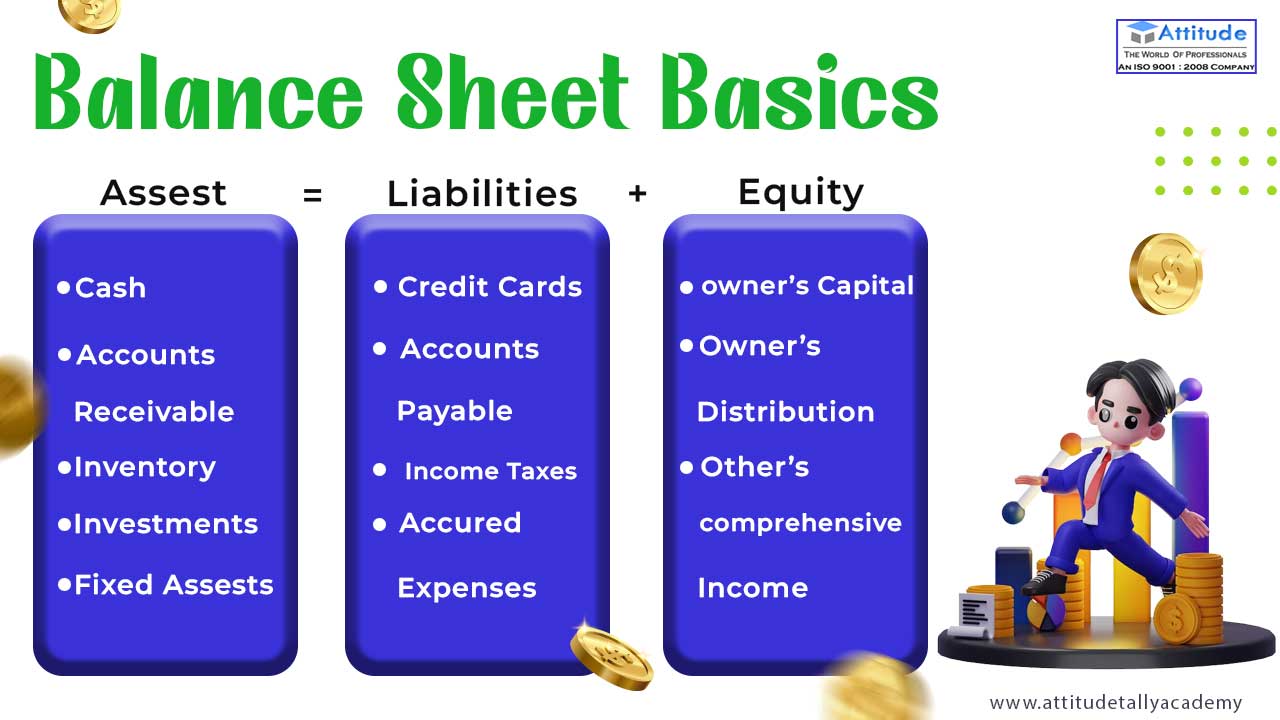Introduction:
In the dynamic world of finance, where transactions happen at the speed of a click, the role of e-accounting becomes increasingly crucial. Among the various financial statements that businesses utilize, the balance sheet stands out as a key document that provides a snapshot of a company’s financial health. In this blog post, we’ll delve into the basics of balance sheet, shedding light on their significance and the fundamental equation that governs them – the accounting equation: Assets = Liabilities + Equity.
Understanding the Balance Sheet
The balance sheet is a financial statement that summarizes a company’s financial position at a specific point in time. It is composed of three main sections: assets, liabilities, and equity. Each of these sections plays a pivotal role in portraying the financial status of a business.
- Assets:
Current Assets: These are short-term assets like cash, accounts receivable, and inventory.
Non-Current Assets: Long-term assets, such as property, plant, equipment, and investments.
- Liabilities:
Current Liabilities: Short-term obligations like accounts payable and short-term debt.
Non-Current Liabilities: Long-term obligations, including bonds and long-term debt.
- Equity:
Owner’s Equity: The residual interest in the assets of the entity after deducting liabilities. It includes common stock, retained earnings, and additional paid-in capital.
The Accounting Equation: Assets = Liabilities + Equity
At the core of the balance sheet lies the accounting equation: Assets = Liabilities + Equity. This equation serves as the foundation of double-entry bookkeeping, ensuring that every financial transaction maintains this balance.
- Assets:
Assets represent what a company owns. This includes cash, inventory, property, investments, and other valuables.
- Liabilities:
Liabilities encompass what a company owes to external parties, such as suppliers, lenders, and other creditors.
- Equity:
Equity signifies the residual interest of the business owners. It is the difference between assets and liabilities and represents the ownership claim on the company’s assets.
Significance of the Accounting Equation
The accounting equation is a powerful tool for businesses and investors alike. Here’s why it matters:
- Financial Health Check:
The equation ensures that a company’s resources (assets) are funded by either debt (liabilities) or ownership (equity).
- Tracking Changes Over Time:
Monitoring changes in assets, liabilities, and equity over time helps in assessing a company’s financial performance and stability.
- Decision-Making Tool:
Businesses use the balance sheet and the accounting equation to make informed decisions about resource allocation, financing, and overall financial strategy.
Conclusion
In the realm of financial e-accounting, understanding the balance sheet and the accounting equation is indispensable. As businesses increasingly rely on digital platforms to manage their finances, a solid grasp of these fundamentals becomes even more crucial. The accounting equation serves as a compass, guiding businesses through the complexities of financial transactions and ensuring a clear, accurate representation of their financial position. In the ever-evolving landscape of finance, mastering the basics remains the key to sustainable growth and success.
Suggested Link:




